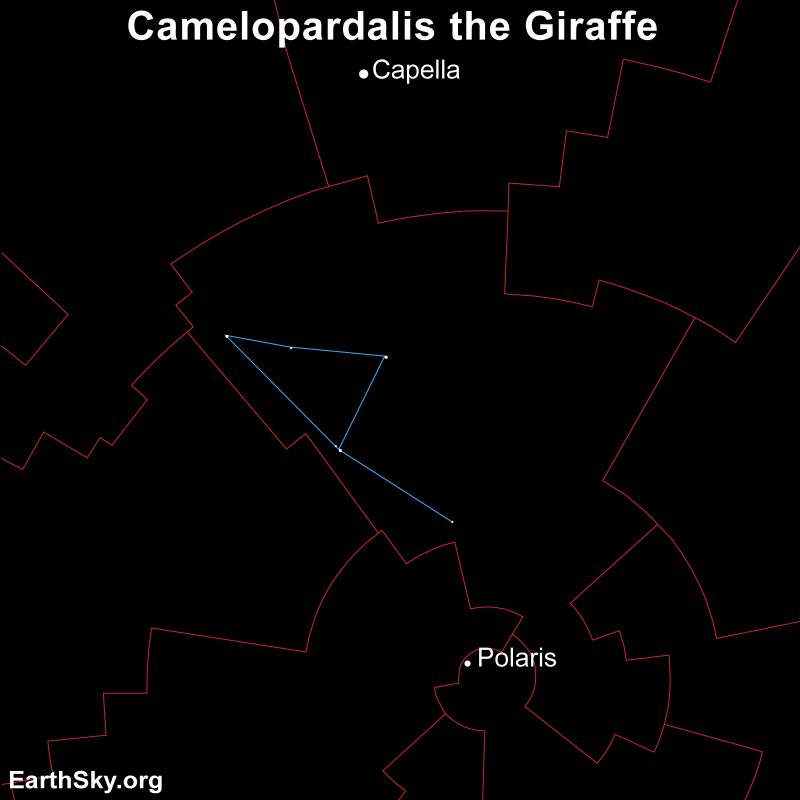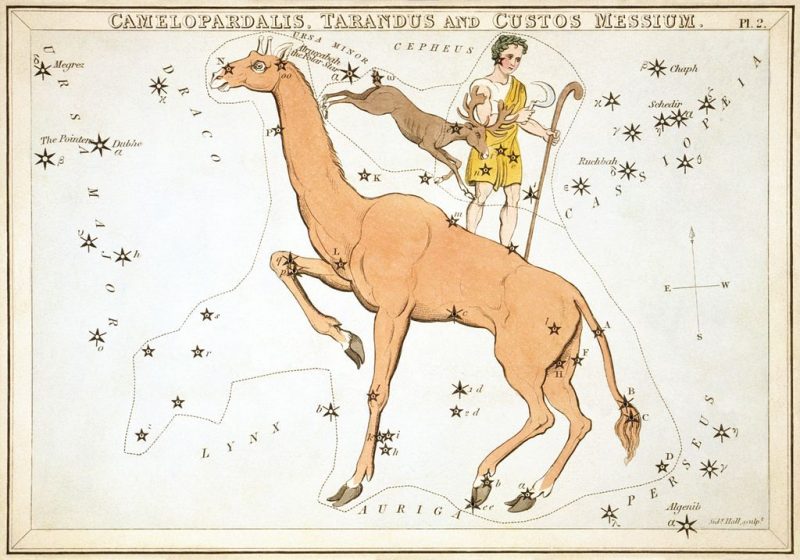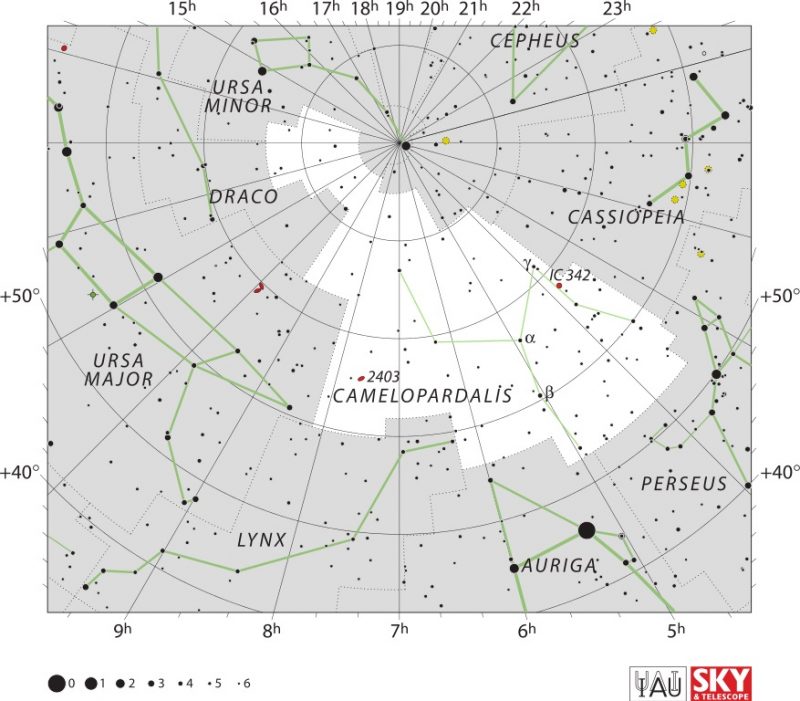
Is it a camel or a giraffe?
That’s not a question you would have to ask yourself if you were looking at an animal in real life. But this faint smattering of stars known as Camelopardalis is supposed to represent a giraffe. Its name in Latin does indeed mean giraffe, and the word originally comes from the Greek’s word for a giraffe, which was spotted camel.
Camelopardalis lies close to Polaris, its border abutting Ursa Minor the Lesser Bear. Because it’s a north circumpolar constellation, people in the Northern Hemisphere can spot Camelopardalis any night of the year.
This region of sky is so empty of bright stars that ancient cultures didn’t give it a constellation name. Petrus Plancius was the first to introduce the constellation of the Giraffe in the early 1600s. Its modern boundaries simply encircle the vast territory of stars that were not already part of another constellation. It lies between Ursa Minor and Cassiopeia the Queen on one side and Ursa Major the Greater Bear on the other.
It can also be described as the nearly empty space off the end of Draco the Dragon’s tail.

The Stars of Camelopardalis
All the stars in Camelopardalis are 4th magnitude or dimmer. In a bustling, light-polluted city, you would have trouble making out a single point of light in this patch of sky. If you’re trying to track down the Giraffe, you’ll want to be in a dark location.
Alpha Camelopardalis lies halfway between Capella and Polaris. It shines at magnitude 4.26 and lies a tremendous 6,940 light-years distant. Beta Camelopardalis is a bit brighter and lies six degrees away in the direction of Capella. Beta Camelopardalis is magnitude 4.03 and at a distance of 997 light-years.

Deep-sky targets in the Giraffe
Camelopardalis lies on the edge of the Milky Way and is quite large. It ranks 18th largest out of the 88 constellations. Yet it contains few notable deep-sky objects. One popular target for astrophotographers is the asterism of Kemble’s Cascade. It’s a trail of stars leading to the star cluster NGC 1502. Find NGC 1502 by forming a triangle with Alpha and Beta Camelopardalis. NGC 1502 is about six and a half degrees away in the direction of Cassiopeia. This magnitude 5.7 grouping carries the name of its discoverer, Father Lucien Kemble. You can pick up the pretty trail of stars in binoculars.
In the opposite direction from Alpha and Beta Camelopardalis and 18 degrees away (it’s closer to the star marking the nose of the bear in Ursa Major, separated by almost eight degrees) lies NGC 2403. This magnitude 8.4 spiral galaxy is visible with a pair of binoculars and a dark sky. It lies approximately 8 million light-years away.

Bottom line: Camelopardalis the Giraffe is a sprawling constellation made of dim stars that lies close the the north celestial pole.











